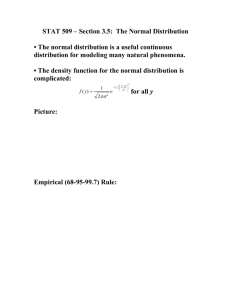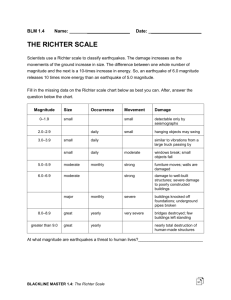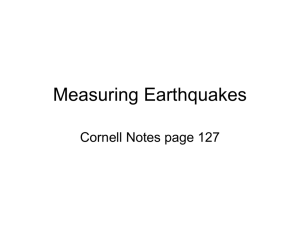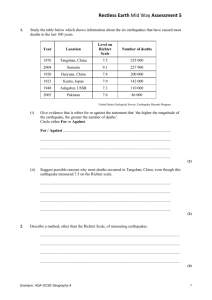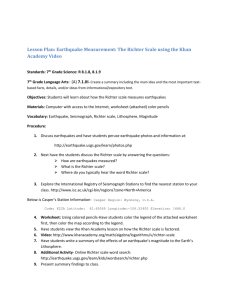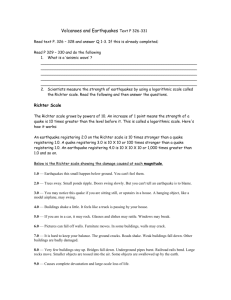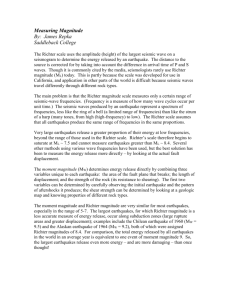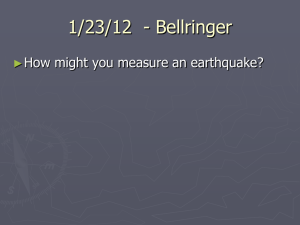Student and teacher notes Word
advertisement
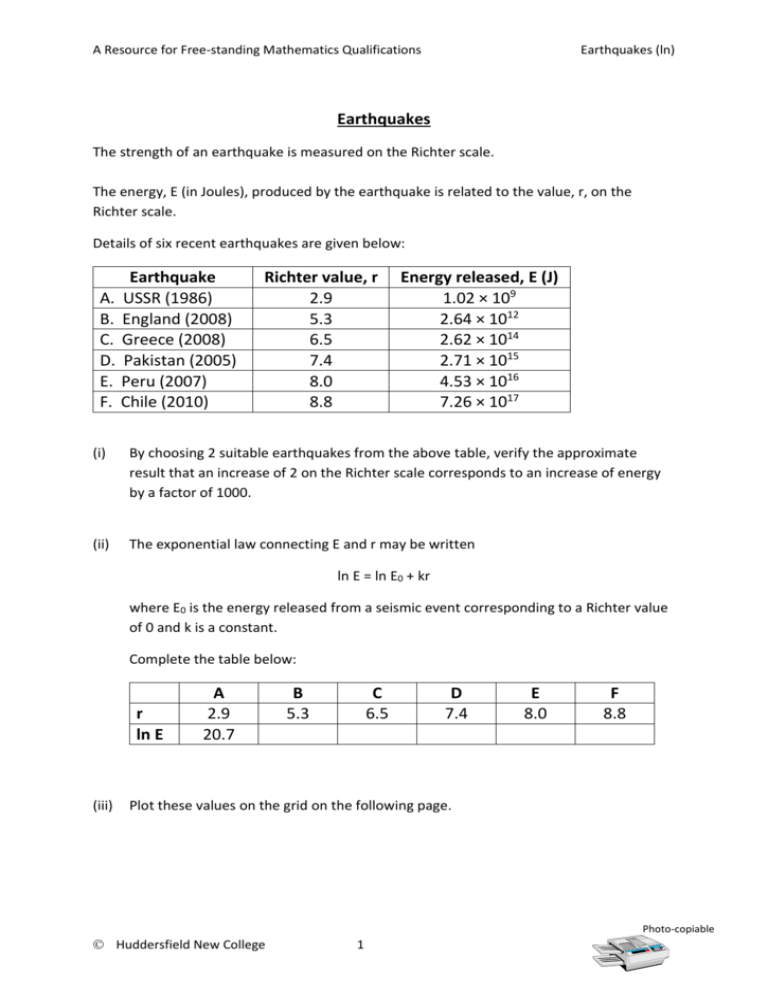
A Resource for Free-standing Mathematics Qualifications Earthquakes (ln) Earthquakes The strength of an earthquake is measured on the Richter scale. The energy, E (in Joules), produced by the earthquake is related to the value, r, on the Richter scale. Details of six recent earthquakes are given below: Earthquake A. USSR (1986) B. England (2008) C. Greece (2008) D. Pakistan (2005) E. Peru (2007) F. Chile (2010) Richter value, r 2.9 5.3 6.5 7.4 8.0 8.8 Energy released, E (J) 1.02 × 109 2.64 × 1012 2.62 × 1014 2.71 × 1015 4.53 × 1016 7.26 × 1017 (i) By choosing 2 suitable earthquakes from the above table, verify the approximate result that an increase of 2 on the Richter scale corresponds to an increase of energy by a factor of 1000. (ii) The exponential law connecting E and r may be written ln E = ln E0 + kr where E0 is the energy released from a seismic event corresponding to a Richter value of 0 and k is a constant. Complete the table below: r ln E (iii) A 2.9 20.7 B 5.3 C 6.5 D 7.4 E 8.0 F 8.8 Plot these values on the grid on the following page. Photo-copiable Huddersfield New College 1 A Resource for Free-standing Mathematics Qualifications (iv) Find the value of the vertical axis intercept. (v) Find the value of the gradient of the graph. (vi) Using your answer to (v) write down the value of k. Earthquakes (ln) (vii) Using your answer to (iv) calculate the value of E0. (viii) Earthquakes with a Richter value between 9.0 and 10.0 are classified as ‘great’. Calculate the least energy produced by a great earthquake. Photo-copiable Huddersfield New College 2
